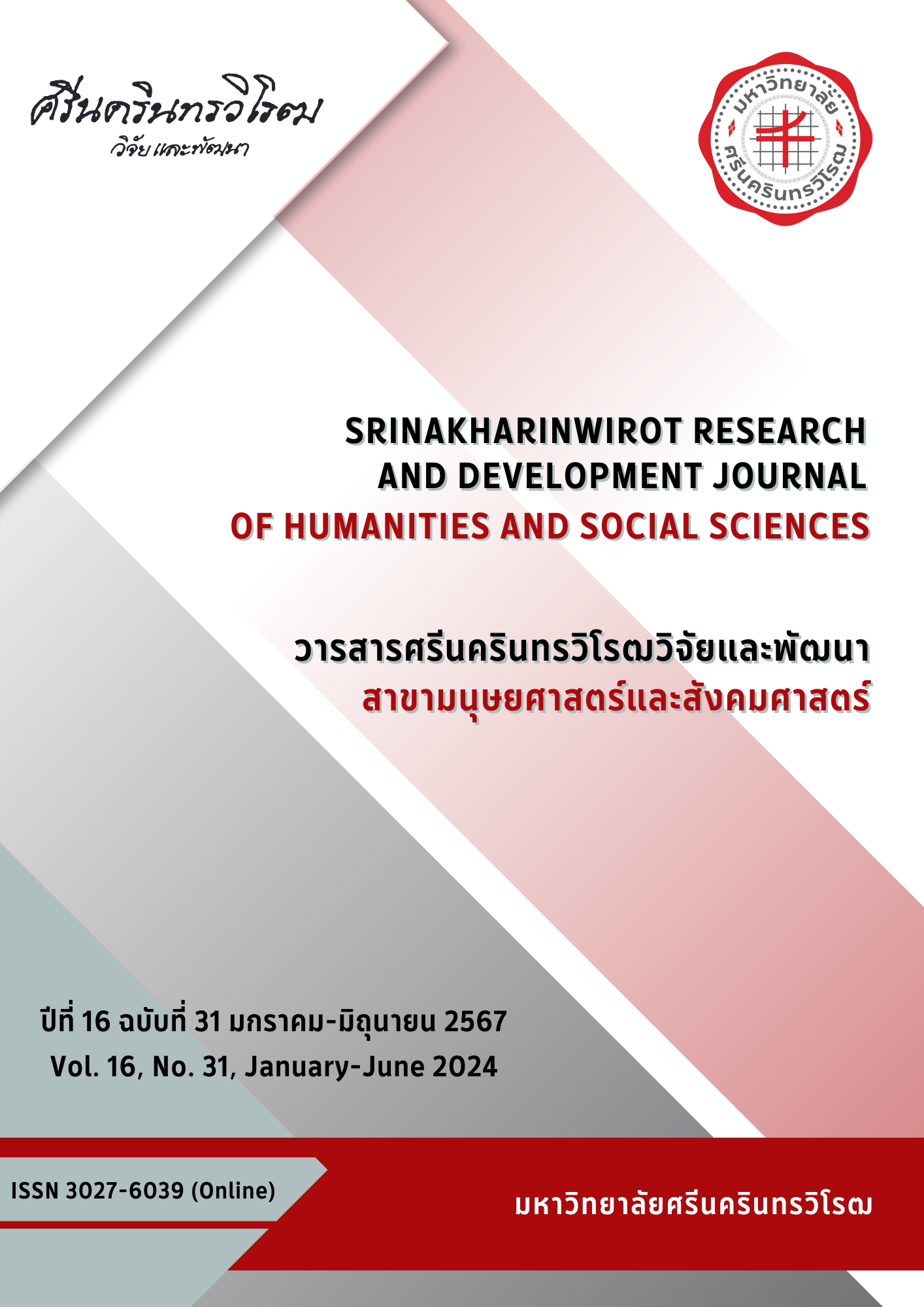AGING PRODUCTIVITY IN SERVICE SECTOR IN THAI PRIVATE SECTOR
Keywords:
Productivity, Performance, Attitude, Aging, Service Sector, Private SectorAbstract
This study has two objectives. First is to study aging productivity in the service sector and second is to analyze the aging productivity in terms of demographic characteristics in the service sector of Thai private sector. By using a quantitative method and a questionnaire as a research tool, data were collected from the aging and their supervisors in 7 private companies. Most of them are in the service sector including retail, telecommunications, health care, as well as manufacturing. A number of 204 aging dataset which were able to match with their supervisors were analyzed. Productivity measurement is based on the supervisor rating, which assesses productivity from two factors; working performance and attitude. The results show that the supervisors have rated relatively higher satisfaction towards the aging’s working performance and also their attitudes, comparing to the younger colleagues in the same job positions. In terms of performance, approximate 56.9 percent of the aging have been better appraised than the younger colleagues. Nevertheless, in terms of working attitude, 68.1 percent of the aging have been much better appraised than their younger counterparts. This implies that aging productivity has a comparative advantage on their working attitude from the supervisors’ perspectives. In addition, this study incorporates demographic characteristics of the aging comprising gender, age, education, job position and skillset into analysis. The findings signify the specific skillsets which the aging hold the highest productivity, which may be the main factors of the companies’ decision to hire. The first and foremost skillset is high-level management skill and critical thinking skill which are important for job positions of manager or executive. The next skillset is communication and collaboration skill which are the core for job positions of coordinator or customer service. On the contrary, the aging is not outstanding at active learning and problem-solving skill. These skills are critical to job position required fast decision making and actively responding to the changing of customer behaviors. This is a disadvantage of the aging and may link to lower productivity of work.
Downloads
References
Lee, R. D., and Mason, A. (2006). What is the demographic dividend? Finance and Development, 43(3), 16-17.
สำนักงานสถิติแห่งชาติ. (2562). สรุปผลที่สำคัญการทำงานของผู้สูงอายุในประเทศไทย พ.ศ. 2562. กรุงเทพฯ: สำนักงานสถิติแห่งชาติ.
กระทรวงแรงงาน. (2563). ฐานข้อมูล Smart Job Center. สืบค้นจาก http://smartjob.doe.go.th/JSK/JobAnnounce/JobMatching
กระทรวงแรงงาน. (2562). ประกาศกระทรวงแรงงาน เรื่อง ขอความร่วมมือส่งเสริมและสนับสนุนให้ผู้สูงอายุมีงานทำ. สืบค้นจาก http://www.mol.go.th/sites/default/files/downloads/pdf/prakad_elderly-compensation_for3march2019.pdf
กระทรวงแรงงาน. (2562). บันทึกความเข้าใจว่าด้วยความร่วมมือด้านการส่งเสริมการมีงานทำให้ผู้สูงอายุระหว่างภาครัฐ ภาคเอกชน. สืบค้นจาก https://www.dop.go.th/download/implementation/th1564473286-1162_9.pdf
ชลธิชา อัศวนิรันดร, ชฎาธาร โอษธีศ, วัชระ เพชรดิน, วิรัลพัชร มานิตศรศักดิ์, และนลัท จิลลานนท์. (2563). รายงานการวิจัย โครงการรูปแบบการจ้างงานผู้สูงอายุในภาคเอกชนของไทย: ความยืดหยุ่น ผลิตภาพ และการคุ้มครอง. กรุงเทพฯ: วิทยาลัยประชากรศาสตร์ จุฬาลงกรณ์มหาวิทยาลัย.
นงนุช สุนทรชวกานต์, และพิสุทธิ์ กุลธนวิทย์. (2556). การศึกษาผลิตภาพแรงงานตามอายุของแรงงานและการทำงานของแรงงานสูงอายุในภาคอุตสาหกรรมการผลิต ภาคการค้าและบริการและภาคการขายส่ง-ขายปลีกฯ และโรงแรม-ภัตตาคาร. กรุงเทพฯ: มูลนิธิสถาบันและพัฒนาผู้สูงอายุไทย.
Skirbekk, V. (2008). Age and productivity potential: A new approach based on ability levels and industry-wide task demand. Population and Development Review, 34, 191-207.
Remery, C., Henkens, K., Schippers, J., and Ekamper, P. (2003). Managing an aging workforce and a tight labor market: Views held by dutch employers. Population Research and Policy Review, 22, 21-40. https://doi.org/10.1023/A:1023543307473
Waldman, D. A., and Avolio, B. J. (1986). A meta-analysis of age differences in job performance. Journal of Applied Psychology, 71(1), 33-38. https://doi.org/10.1037/0021-9010.71.1.33
Swick, R., Bathgate, D., and Horrigan, M. (2006). Services Producer Price Indices: Past, Present, and Future. U.S. Bureau of Labor Statistics. Retrieved from https://conference.nber.org/confer/2006/si2006/prcr/swick.pdf
Maroto-Sánchez, A. (2012). Productivity in the services sector: Conventional and current explanations. The Service Industries Journal, 32, 719-746. https://doi.org/10.1080/02642069.2010.531266
กระทรวงแรงงาน. (2563). ความต้องการด้านทักษะของผู้ทำงาน. สืบค้นเมื่อ 10 สิงหาคม 2563, จาก http://manpower.mol.go.th/pmanp_2017/index.php/main/table_view/47
Bitran, G. R., and Chang, Li. (1984). Productivity measurement at the firm level. Interfaces, 14(3), 29-40.
Downloads
Published
How to Cite
Issue
Section
License
Copyright (c) 2024 Srinakharinwirot Research and Development Journal of Humanities and Social Sciences

This work is licensed under a Creative Commons Attribution-NonCommercial-NoDerivatives 4.0 International License.
Srinakharinwirot Research and Development Journal of Humanities and Social Sciences is licensed Under a Creative Commons Attribution-NonCommercial-NoDerivs 4.0 International (CC-BY-NC-ND 4.0) License, Unless Otherwise Stated. Please Read Journal Policies Page for More Information on Open Access, Copyright and Permissions.



